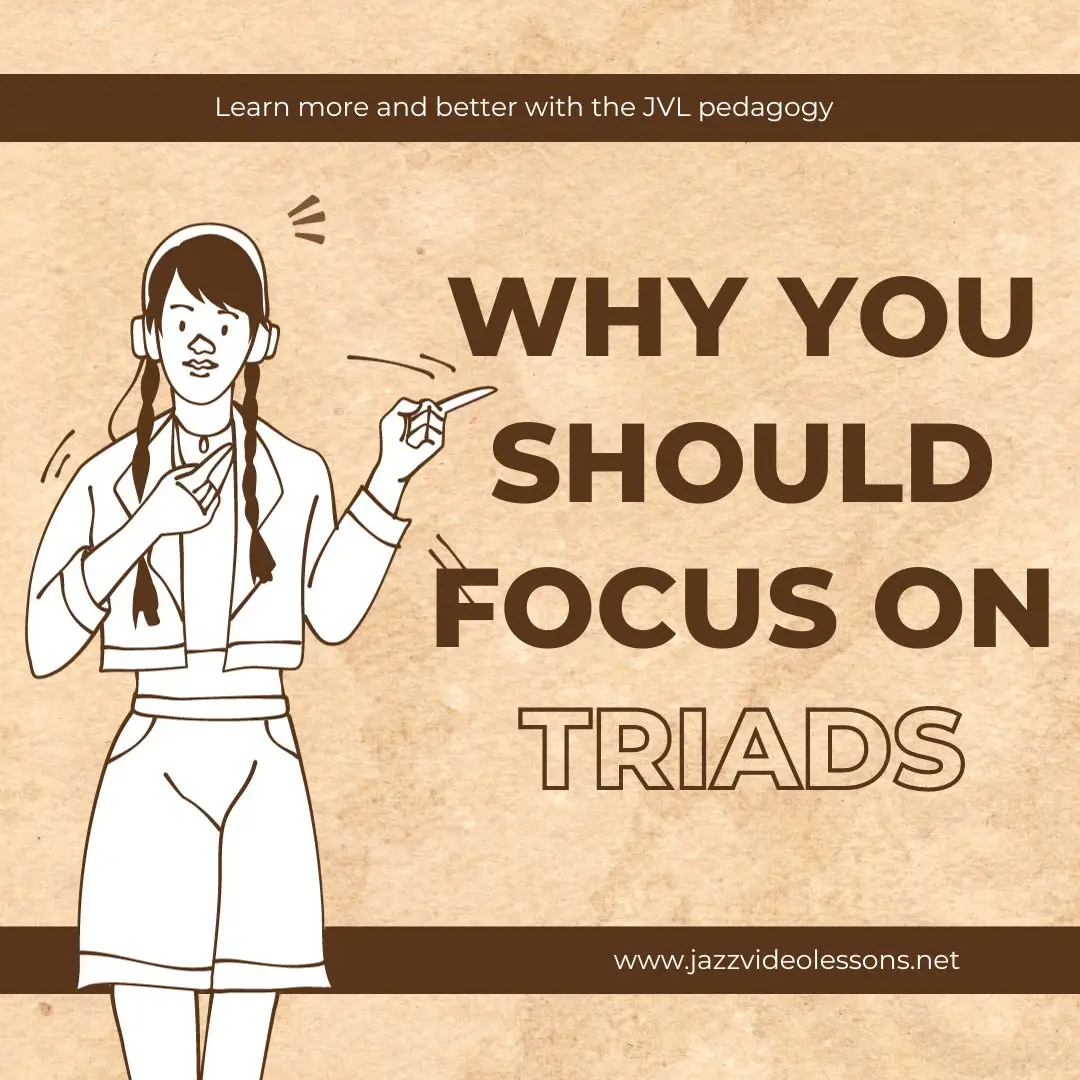Mastering Triadic Improvisation: Voice Leading for Jazz Solos
Triadic improvisation is a foundational technique that jazz musicians use to develop melodic and harmonic creativity in their solos. It involves using triads—three-note chords typically constructed of root, third, and fifth—and applying voice leading principles to create smooth, connected lines that reflect the underlying chord changes. This method not only simplifies improvisation but also enhances musical coherence and expression.
In this post, we will explore the essentials of triadic improvisation, including major and minor triads, voice leading techniques, practical exercises, and applications in blues and advanced harmonic settings.
Understanding Triads: The Building Blocks of Harmony
What Are Triads?
A triad is a chord consisting of three notes: the root, the third, and the fifth. In jazz and Western music theory, triads are categorized as major, minor, diminished, or augmented, depending on the intervals between these notes. The most commonly used triads in improvisation are major and minor triads.
Importance of Major Triads: Primary Triads (I, IV, V)
Major triads function as the primary building blocks of harmony, especially the triads built on the 1st (I), 4th (IV), and 5th (V) degrees of the major scale. For example, in the C major scale:
- C major (I)
- F major (IV)
- G major (V)
These triads form the harmonic backbone of countless songs, including standards, blues, folk, and religious music. Understanding and mastering these triads allows improvisers to navigate chord changes effectively.
Minor Triads and Their Role
Minor triads are commonly found on the 2nd (ii), 3rd (iii), and 6th (vi) degrees of the major scale. In the key of C major, these are:
- D minor (ii)
- E minor (iii)
- A minor (vi)
Minor triads add emotional depth and variety to improvisation, especially when used to target sus4 chords or add contrast to major triad melodies.
Voice Leading: Connecting Triads Smoothly
What Is Voice Leading?
Voice leading is the technique of moving individual notes (voices) from one chord to the next in the smoothest possible way, often by maintaining common tones or moving to the nearest notes. This technique helps create coherent melodic lines that respect the harmonic progression.
Voice Leading in Practice
When improvising with triads on melodic instruments such as saxophone or piano, it’s important to “voice lead” the triads:
- Maintain common tones between consecutive triads in the same voice.
- If no common tones exist, move to the closest possible note.
- Use inversions of triads (root position, first inversion, second inversion) to minimize leaps and create smoother lines.
For example, moving from a C major triad to an F major triad, the common note C can be retained in the same voice for a seamless connection.
Exercises for Developing Voice Leading
Practicing triads with voice leading involves:
- Playing major triads in all inversions ascending and descending the scale.
- Practicing minor triads in a similar manner.
- Connecting triads with shared notes or nearest tones, focusing on smooth transitions.
- Applying these exercises over jazz standards or blues progressions.
Applying Triadic Improvisation: Practical Examples
Triads in Jazz Solos: Historical and Modern Usage
Many legendary jazz soloists—such as John Coltrane, Patrick Bartley, and Michel Petrucciani —rely heavily on triads applied creatively over complex chord changes, demonstrating the power and flexibility of this approach.
Improvising Over Blues Progressions
The blues is a practical playground for triadic improvisation. The typical 12-bar blues progression revolves around the I7, IV7, and V7 chords, which can be derived from a parent major scale. For example:
- C7 from F major scale
- F7 from B♭ major scale
- G7 from C major scale
Using the major triads built on the 1, 4, and 5 degrees of these parent scales allows for effective improvisation with strong voice leading and rhythmic variation.
Incorporating Tritone Substitution
Tritone substitution adds harmonic interest by replacing a dominant chord with another dominant chord a tritone away. For instance, substituting C7 with Gb7 in the fourth bar. Triadic improvisation can extend to these substitutions by using triads from the substituted parent scale.
Creative Approaches and Advanced Concepts
Rhythmic Variation and Freedom
Beyond the technical exercises, triadic improvisation thrives on rhythmic creativity. Varying the rhythm of triads within a solo creates engaging, dynamic lines that avoid monotony. This is where the improviser’s personality shines, as the same triads can produce vastly different effects depending on rhythmic phrasing.
Using Triads to Navigate Complex Progressions
Jazz compositions often feature sophisticated chord changes. Triadic improvisation can simplify navigating these progressions by focusing on just two triads that fit multiple chords within the progression. For example, E♭ major and E♭ minor triads can be used to outline a complex sequence of chords smoothly, adding tonal variety while maintaining harmonic clarity.
Adding Extensions: Ninths and Elevenths
Major triads can be embellished by adding the ninth, while minor triads can be extended with the eleventh. These extensions enhance the texture and color of the solo while keeping the improvisation grounded in triadic harmony.
Frequently Asked Questions (FAQ)
Is Triadic Improvisation Too Mechanical?
While triadic improvisation may initially seem mechanical due to its focus on patterns and voice leading, it is a powerful method for building strong harmonic understanding and technical precision. Mastery of these fundamentals frees the improviser to be creative and expressive without losing clarity.
Can Triadic Improvisation Be Used on All Instruments?
Yes. While chordal instruments like piano and guitar can play full triads, melodic instruments such as saxophone or trumpet use arpeggiated triads to imply the harmony effectively.
How Does Triadic Improvisation Relate to Other Jazz Techniques?
Triadic improvisation is a core skill that complements other jazz approaches such as scale-based improvisation, modal playing, and bebop. It provides a harmonic framework upon which more advanced techniques can be layered.
Conclusion: Why Triadic Improvisation Matters
Mastering triadic improvisation and voice leading is essential for jazz musicians who wish to develop clear, melodic, and harmonically rich solos. It provides a structured yet flexible approach to improvisation, enabling musicians to connect chord changes smoothly, create memorable phrases, and navigate complex progressions with ease.
By dedicating time to exercises that emphasize major and minor triads, practicing voice leading, and applying these concepts creatively over blues and standards, players can significantly elevate their improvisational skills.
For those committed to deepening their jazz improvisation, exploring a comprehensive triadic improvisation course can offer guided learning, practice routines, and further insights into this essential technique.







2 Responses
Watch the beautiful documentary about Michel Petrucciani:
https://jazzvideolessons.net/michel-petrucciani/
Check out pianist Dulce practicing a transcription we studied in JVL. This is a solo by Michel Petrucciani and we discussed his choice of triads 🙂